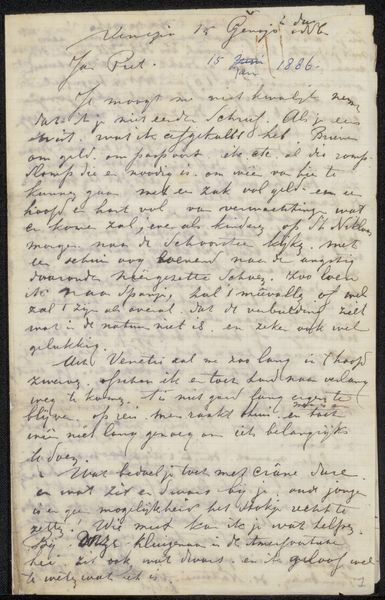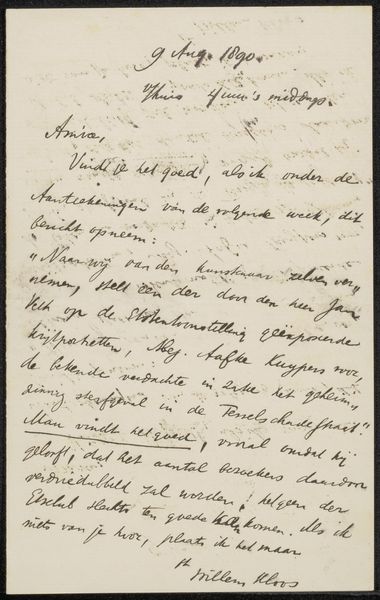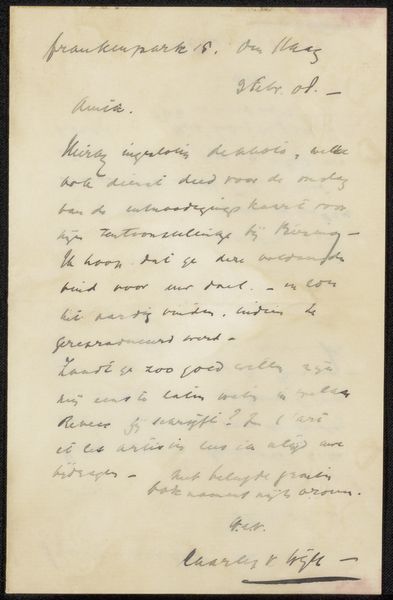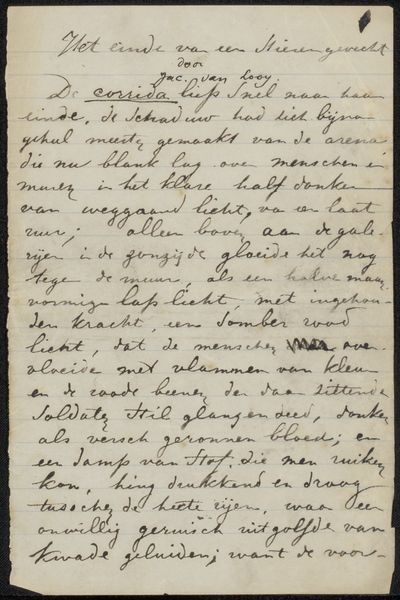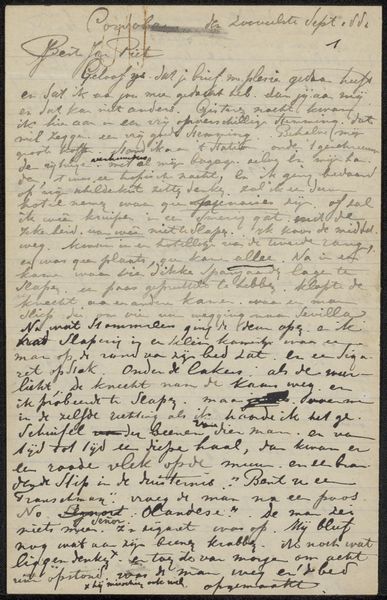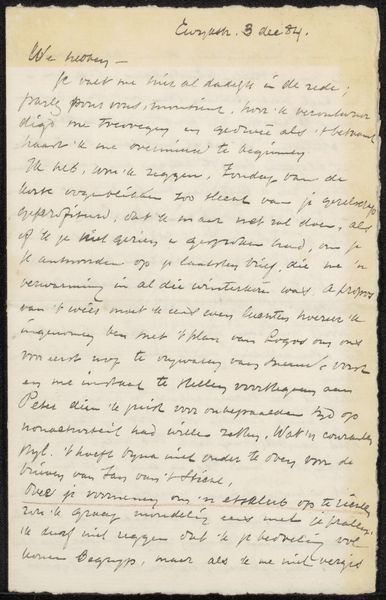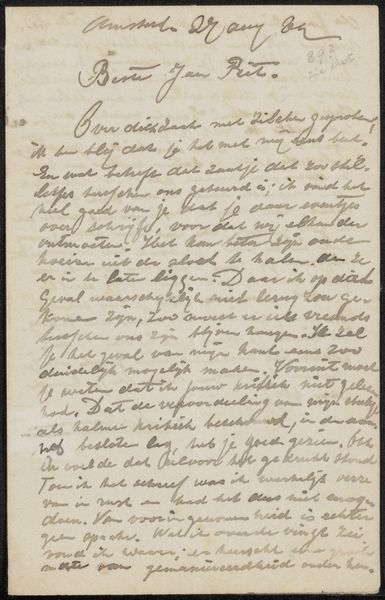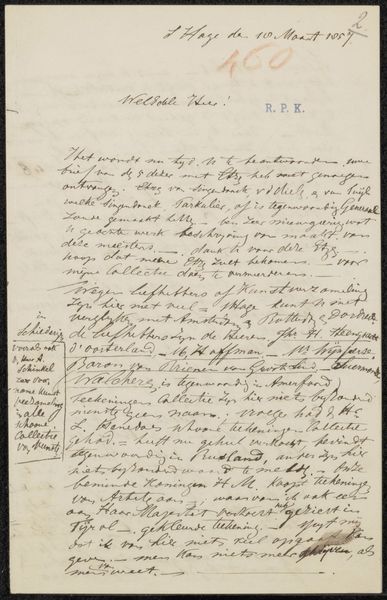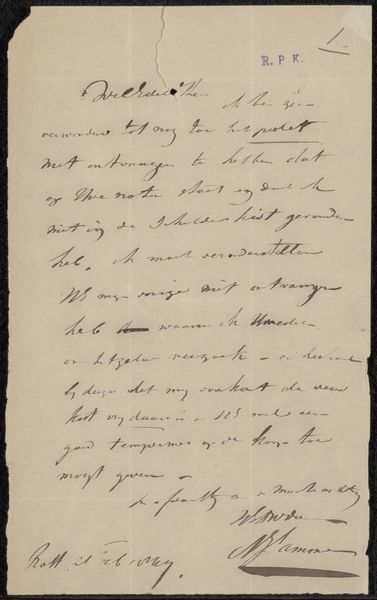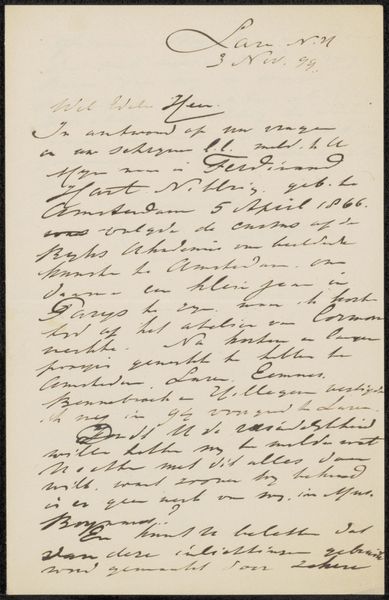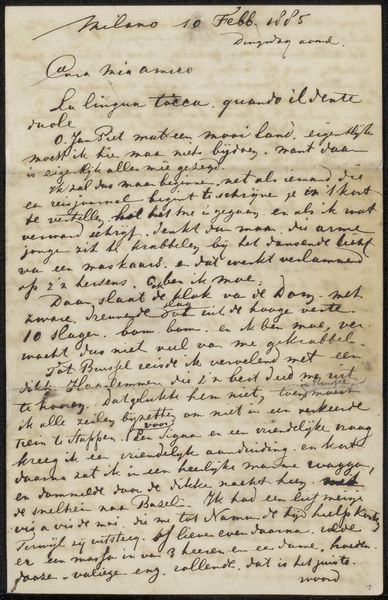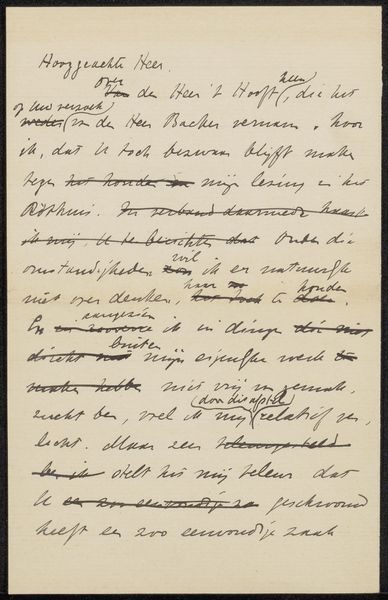
Copyright: Rijks Museum: Open Domain
Editor: Here we have Anton Mauve's "Brief aan Philip Zilcken," likely from 1887. It's ink on paper, and while not a typical drawing, the expressive script itself strikes me as a portrait of the artist's mind at work. What can you see in this piece beyond just the writing itself? Curator: Well, immediately I'm drawn to the romantic impulse that letter-writing embodies— a reaching out, a tangible link across distance and time. But beyond the personal, consider how handwriting itself becomes a symbol. Editor: A symbol of what exactly? Curator: Of personality, of status, of a bygone era where such intimate correspondence was commonplace. Each flourish, each slant tells a story. How do you think this contrasts with, say, a typed message today? Editor: It feels much more… present. More immediate. The slight imperfections humanize it. You lose that personal touch in a typed message. Curator: Precisely! Notice also how the ink bleeds slightly into the paper, like an old photograph fading. That's part of its allure too. It creates this melancholic tone as the evidence of communication fades in time. What do you think that says about Mauve’s intent or his feelings when writing it? Editor: It seems to speak to the idea of remembrance, a need to capture something before it’s lost forever, and he chose to hand-write it. It makes you wonder about his relationship to Zilcken to use a slower way of communicating. Curator: I think we’ve just unearthed a powerful sentiment encoded within the simplest of forms: a hand-written letter. A symbol not just of information, but of shared humanity and the poignancy of time itself.
Comments
No comments
Be the first to comment and join the conversation on the ultimate creative platform.
